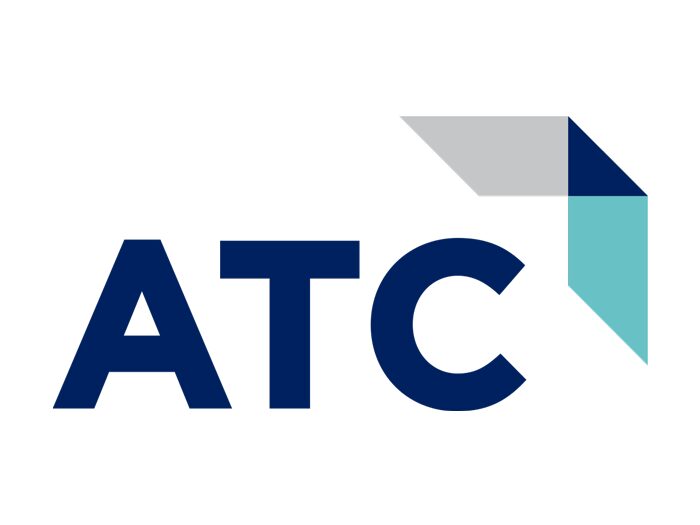
(ATC’s co-founder’s and managing partner’s, David Goodwin and Darren DeMartino, were recently interviewed about succeeding with UCaaS. The article below initially appeared in the XaaS Journal here.)
Clients need the assistance of a qualified UCaaS advisor — from planning to ongoing support.
Since David Goodwin and Darren DeMartino founded ATC in 1999, telecom has gone through sweeping changes. Technology is vastly different, with state-of-the-art systems evolving from the PBX to today’s hosted, connected Unified Communications as a Service (UCaaS). Customer demands have also evolved — they want more than voice communication. They’re looking for solutions that integrate with other business systems to provide them with new efficiency and maximize their return on both their telecom and IT investments.
Goodwin points out that for ATC, now managing more than 40,000 endpoints in 38 states and international, one of the most significant changes for their business over the past 20 years was moving from a broker-like model to a consultant model, driven by changes in the industry and the challenges they can create.
UCaaS Solution Challenges
In many cases, a new UCaaS client is moving from a legacy analog or digital system to a whole new world. Few, if any, of the stakeholders in the buying decision — which can include receptionists, call center managers, the sales team, marketing, operations and the CFO — have any familiarity with UCaaS. Goodwin says multiple parties involved in the buying decision, as well as IT resources’ limited experience with voice systems, require UCaaS advisors to take a consultative approach as they help the organization make the best choices.
DeMartino says demonstrating ROI is particularly important, especially for enterprise prospects. “Not all are willing to move away from on-premise systems. Either it’s a matter of the money they’ve invested in their current system, and they haven’t fully amortized it yet, or they aren’t quite ready to move to cloud telephony,” he explains. First-year ROI, however, can be significant, especially if the enterprise has acquired other companies and its locations have disparate systems.
ATC worked with a large manufacturer in the North East U.S. with 80 locations and 8,000 phones that saved $2.9 million in year one: $2.4 million by avoiding capital costs replacing systems that had reached their end of life and $400K to $500K reduction in ongoing costs.
Start With An Audit
Before you begin to design a new system, you need to understand the current system, its capabilities, as well as its limitations. Take an inventory of how many locations the customer has, how many users, and whether they use desk phones in the office or work remotely. You also need to know their needs for collaboration, including screen sharing, web conferencing, and web chat — which some of ATC’s clients are looking for to accommodate their millennial customers’ “omnichannel” communication preferences. Also, evaluate the company’s network to see if it can support voice becoming another “app” on the WAN or LAN.
Goodwin says once you understand the client’s current system, you can move to an architecture and design phase. This is the time to bring in each stakeholder to understand what they want the system to do and determine mandatory functionality as well as their “nice to haves.”
Finding The Perfect Fit
Goodwin’s team at ATC’s location near Cincinnati, OH, handles the RFP/RPQ process for its clients, soliciting proposals from different phone providers. He says once they have responses from providers, they put the quotes into a single document that makes it easy for their clients to make an apples-to-apples comparison— which is often hard for end users due to vendors using different quote formats, pricing structures, promos and discounts. Goodwin’s team also assists the clients with negotiating final pricing, terms and conditions.
DeMartino’s team near Hartford, CT, which provides UCaaS to enterprises and large businesses, also focuses on helping clients select their systems. “It’s a very disruptive technology with a lot of new vendors in the space,” he explains. UCaaS consultants need to understand what each vendor can — or can’t — offer to help clients choose the system that will best meet their needs. He says ATC has over 30 vendors in its portfolio, including most Gartner Magic Quadrant UCaaS companies.
Many clients are looking for a platform that gives them access to APIs and, therefore, application integration, so they can customize their systems. Unified communications and collaboration features are very important for clients looking to attract millennials for employment. Some clients are looking for vendors that support specific types of handsets. DeMartino says one of the biggest deciding factors in choosing a phone provider is integration with other business systems — customers want to integrate their communication system with Salesforce, Slack, Office 365, Google or other applications to maximize efficiency and productivity. And, he points out, not all UCaaS providers have the ability to integrate with the applications they use.
“There’s not a single fit for all of our clients,” Goodwin comments.
Implementation And Ongoing Support
During project implementation, ATC facilitates regular calls with the vendor and the client. Goodwin says there are a lot of things that can go wrong during an on-site install — problems with the LAN or WAN, call flow, setting up voice mail, implementing the firewall, integration with alarm systems, door buzzers and paging systems — but by the time ATC leaves the site, they make sure they’ve taken care of all major issues. “We hold hands, make sure it’s clean,” says Goodwin. “We’re there as a value-added resource.”
Work isn’t over once the system is up and running. ATC provides “Super Support.” “We remediate issues they bring to our attention as soon as possible,” Goodwin says. “We take care of their communications system so they can focus on their business.”
Don’t Move Forward With UCaaS Unless You Have The Expertise You Need
“It’s great to want to be a one-stop shop for your clients, but you need to commit to UCaaS and develop your offering,” DeMartino says. “The barrier for entry is low, but it takes a lot of expertise to do it right. You need to build relationships with vendors, understand the intricacies of their solutions and have a solid tech team behind you.” It’s also important to realize that UCaaS won’t be just a part-time initiative. “You need to do this day in and day out,” he says.
ATC sees synergistic partnerships between MSPs and telecom providers as a way for MSPs to enter the UCaaS space. “The greatest source of new business for us comes from MSPs,” Goodwin points out. “Most don’t handle networking or phone systems — some do one or the other, but not both. And we don’t do what they do either. We stay in our lane.”
ATC has found that this can be a win-win for both the telecom provider and the MSP — and most notably for the client.









